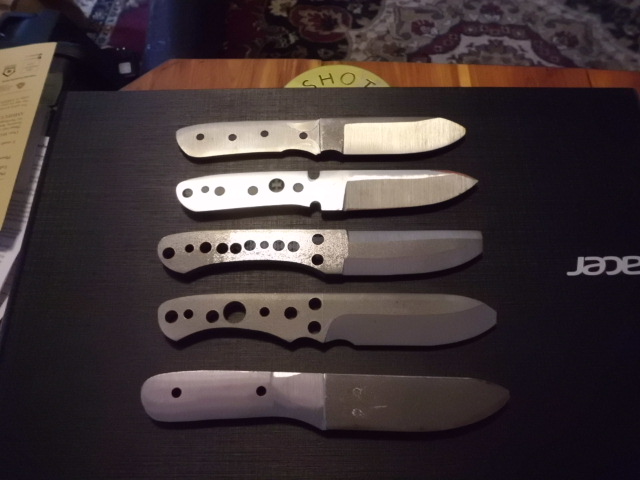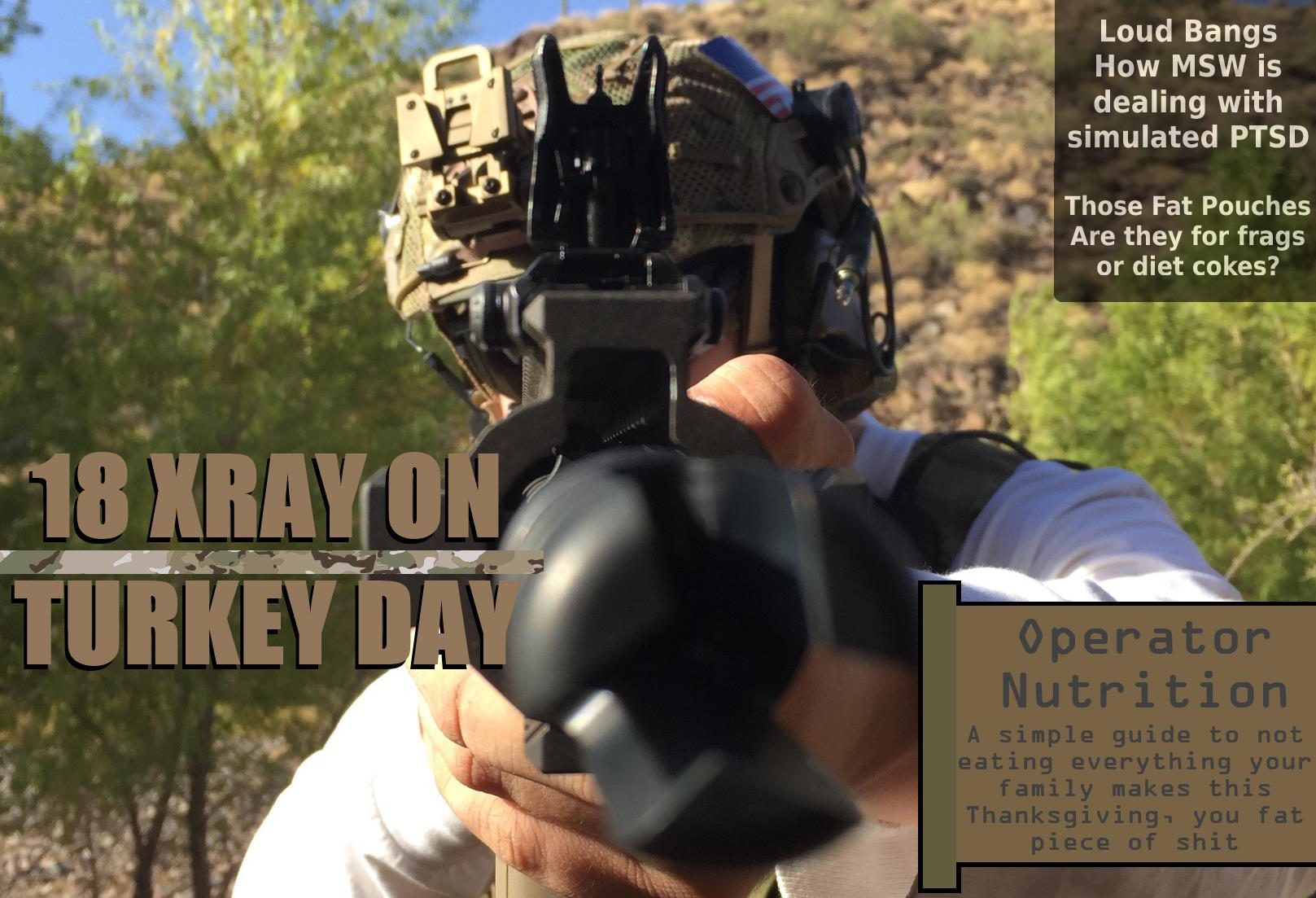The Quick Rundown on Design and Fabrication of Stock Removal Knives
Have you ever wanted to know what it would take to make your own knife from a piece of scrap metal or bar stock? Well here is the quick rundown.
Designing The Knife
The first step in designing your knife would be to identify the constraints on your design based on the tools you have available. For example, you cannot have a knife with holes if you do not have a drill. Knife features which are very dependent on the tools you have are holes, internal radii, and hollow grinds. Be sure to take inventory of the tools you have available before you begin designing your knife. Yes, you can make a knife with only a metal file.
Be Advised
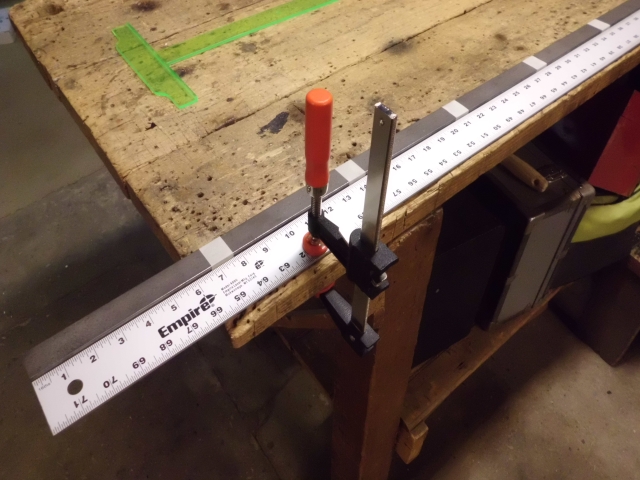
You may also want to keep in mind what steel alloy you will be using. Sometimes you pick the steel based on the design and sometimes you make a design based on the steel you have on hand. If you are using a piece of steel of an unknown alloy, it is possible to partially determine what type of steel it is based on the sparks created when it is put to a stone grinding wheel. Do an internet search to find out more!
Designing On Paper
A lot of knife makers design on paper with pencils, pens, and markers. Begin with some rough sketches and refine the design through as many iterations as you need. The dimensions you need to keep in mind are thickness, length, and width.
If you would like to use a paper template to transfer the design to your steel, make your drawing using rulers, a compass, french curves, and a writing implement that creates a bold line.
Designing with CAD
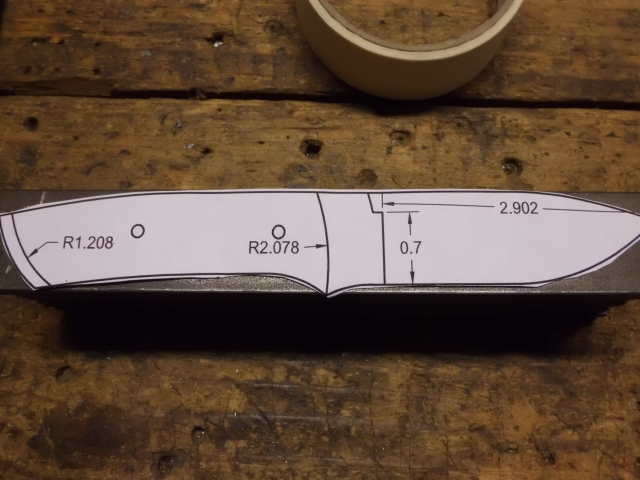
CAD is very useful for designing and making drawings which you can print out to use as templates. I currently use Fusion360 which has a license of free use for hobbyists. Make sure that when you print your drawing from a PDF it is exactly to scale on the paper. This requires going through your printer settings and double checking with a ruler.
Pro-Tip
Keep in mind that your knife will likely have dimensions which are either slightly undersized or oversized depending on how you ground and cut the steel.
Laying Out the Knife Design on Steel
If you want to reuse your paper template, use a paperweight to keep it in position on the steel and use a marker to color in the areas not covered by the template.
If you want to print and cut out many templates, affix a template with a low adhesive glue or tape to each piece of steel.
Profiling Multiple Knives
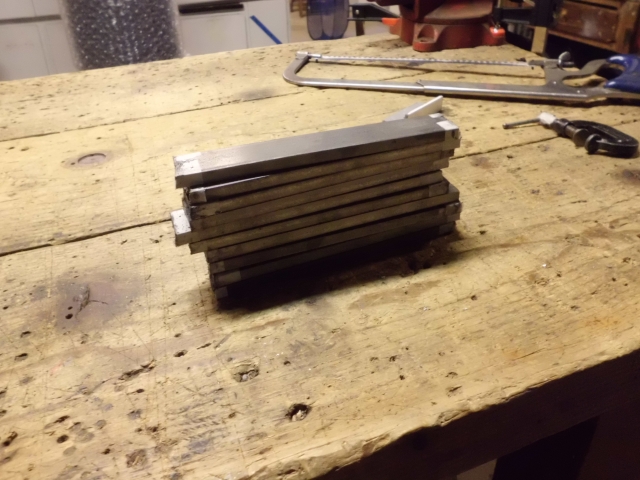
You can profile multiple pieces of steel at the same time in order to save time and make many similar looking knives. The steel will either need to be clamped together or held together with nuts, bolts, or threaded rod. Make sure the edges of the bars are as closely aligned as possible. Keep in mind that the top piece of steel in the stack might be square with the platen on the grinder but the bottom piece might not be. Flip, rotate, and inspect the edges on your stack to make sure they are being ground evenly. Keep in mind that if you drill holes through the whole stack, the bit may wander after a few inches and cause your hole pattern to be misaligned.
I only suggest doing this if you have a vast supply of grinding belts. When I first attempted this I ran out of 60 grit ceramic belts and was stuck with 10 knives I couldn’t work on until I bought more belts. It is better to work on one knife at a time for beginners.
Grinding the Knives
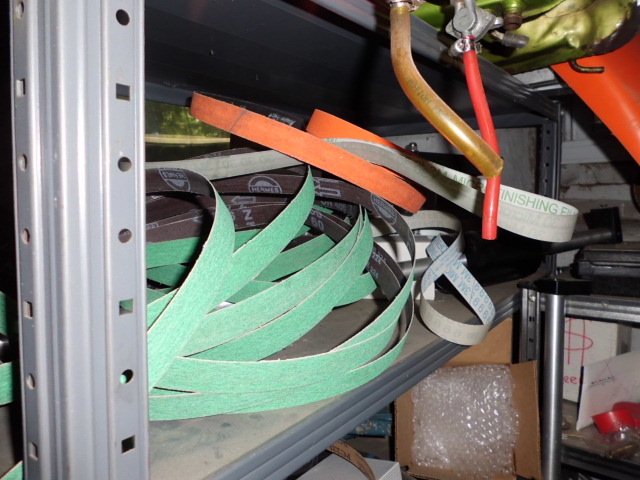
I recommend using a belt sander starting with 60 grit belts. I suggest buying ceramic belts to start the grinding. When I began, I bought the cheapest belts I could find. These cheap belts become paper in 30 seconds. Now I buy the premium belts like Norton Blaze and the work goes much quicker.
You can use a 1×42 belt but bigger is better and faster is usually better. Make sure you have a table set up in front of the platen that makes your workpiece as square as possible to the platen. You may want to get a metal block to use as a grinding fixture. Use a bucket of water to cool the steel after a few passes on the belt.
Remove all the inked pieces of the steel to create the shape of your knife. This is called profiling the knife or “making a blank”. You will not be grinding the edge or changing the thickness during this grinding step. Leave excess material around the tip or any fine detail areas.
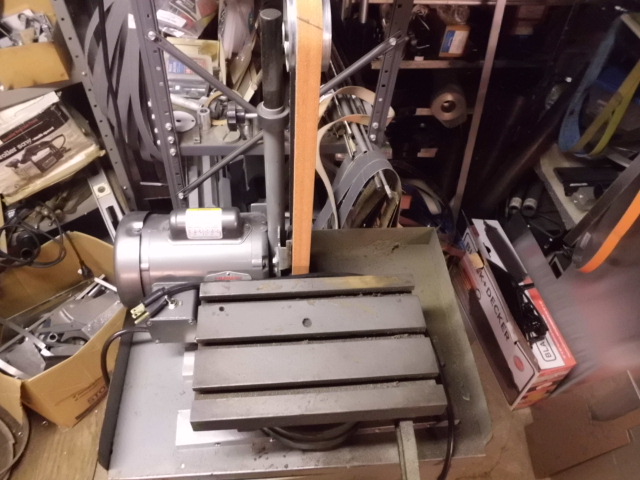
Do not put a point on the knife. You may put half a tip on the knife by grinding the region where your sharp edge will be but leave the top spine part of your blade without a point. Once you have the shape ground out, inspect all the corners and edges to make sure they are square. This is as far as you can take your knives in a stack if you are making multiple knives.
Depending on how thick your knife blank is and how confident you are at grinding, you may heat treat your knife blank during this step. Keep in mind that depending on the alloy and what heat treat process you will use, there may be slight warping and distortion of the steel along edges.
Some knife makers prefer to heat treat during this step so that it is easier to control the amount of material removed in future grinds. If your knife is near 1/4 inch thick or thicker, you will probably want to grind the edge and other features to be close to the final dimensions.

Now you will be grinding the knives individually. The next step is to find the center line on what will be the edge of your knife. I lay the steel on a granite block and use a vernier height gage with a carbide scribe to find the center line. Color the “thickness” faces of the knife blank with marker or ink and then use the scribe to scratch any lines you need. You will use the center line to assist in grinding a good sharp edge.
There are many different blade geometries and edge grinds but I will just explain how to do a straight grind. Some knife makers prefer to have the blade edge facing up and some prefer to have the edge facing down while grinding. It all depends on your grinder setup. I grind using a fixture and with the edge facing up so I can easily see the center line. You will need to have your table slightly angled in relation to your grinder platen to get nice straight lines on your grind. If your blank is not heat treated, you will not have to cool it in the water bucket as often and may use more pressure when grinding. If your blank has been heat treated, cool the blank more often to avoid any unwanted change in the heat treatment. Grind one side of the knife up to the center line and then grind the other side as close as you can to the center line. I prefer to start my grind by making contact with the belt at the end of the ricasso and pulling the knife across the belt so the tip makes contact last.
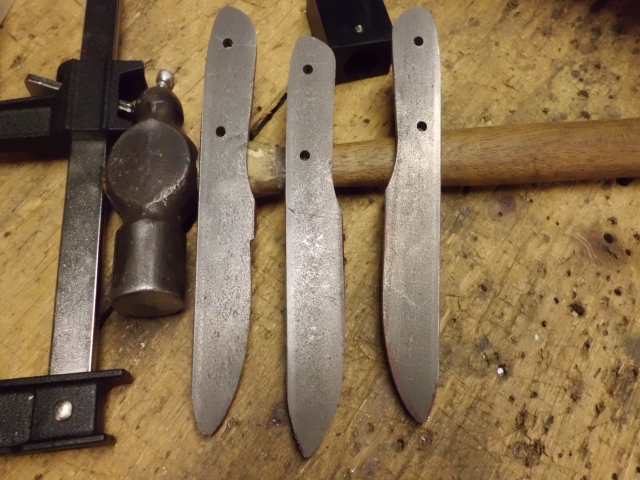
You should now have a knife with a rough edge and no point. I grind the point by contouring the spine slowly and slightly behind the point. I begin by starting the grind closer to the ricasso and then pulling the tip across the belt, the same way I grind the edge. To really get a nice point I find it easier to begin contact with the point and move the ricasso towards the belt until I reach the portion where my contour is, this is the opposite direction that I grind the edge. The spine region which becomes the point will have a very short (sometimes unnoticeably short) straight line before it blends into the contour of the spine. This is what makes a very pointy point!
Once you have the dimensions of your unsharpened edge feel free to do any detail grinds or extra contouring to the knife. I prefer not to put a sharp edge on the knife until all other grinding is done. Depending on if you are using a grinding fixture and whether or not you want scales or paracord on the handle, you can complete the handle at any time as long as it will not interfere with sharpening. Do not work on the handle until all features are ground to their final dimensions.
The last step is either final cosmetic detail which would have interfered with sharpening or simply sharpening the knife. Sharpen the knife nearly the same way you ground the rough edge but use less pressure. Begin at 80 or 100 grit and work your way up to as fine a grit as you want. If you want to use 10,000 grit as your last step go right ahead. Strop on a piece of leather after sharpening.
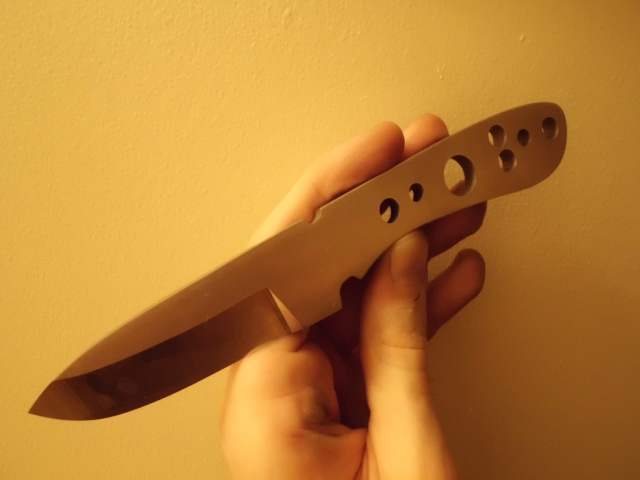
Quick FAQ
Q: What alloy should I start with?
A: Any stainless steel that is suitable for cutlery. It is cheap and easy to take care of. Make sure you are able to heat treat any alloy you get unless you are having it treated by someone else.
Q: How do you heat treat your knives?
A: I don’t heat treat them myself. I send my knives to a professional heat treat shop that is experienced in working with knives. They include cryogenic freezing the knife as well which I can’t do in my shop.
Q: Can I use a 1×42 belt grinder?
A: Yes but it will be very annoying and a lot of 1×42 belt grinders do not have wheels or platens which are suitable for knife making. I had to modify my platen on my 1×42.
Q: What belts should I buy?
A: I use ceramic and aluminum oxide belts. Buy the expensive premium belts, they last much longer and are so much better. I made the mistake of buying the cheapest belts I could find and they became smooth paper in 30 seconds. Buy 3M, Norton, and Klingspor. There are also many small companies which make premium belts which knife makers swear by.
Q: What should the dimensions of my first knife be?
A: Overall length 6-7″, 1″ wide blade, 3/16ths thickness or thinner.
Q: Can I make my first knife a folding knife?
A: Yes but don’t try it. My first “knife-shaped object” was actually a folding knife made from a motorcycle trailer.

Q: What tools do you use?
A: Belt grinder and many different types of belts and a leather strop belt
Bucket of water
Homemade grinding and milling fixtures
Square edge metal files (for straightening out lines)
Red permanent marker
Grizzly G0759 Mill
Masking tape
Granite level surface bench block
Vernier height gage
Machinist combination square and ruler
Table vise
Hacksaw
Many kinds of clamps
Hammer and marking punches
A small scribe
Calipers
Good lighting
